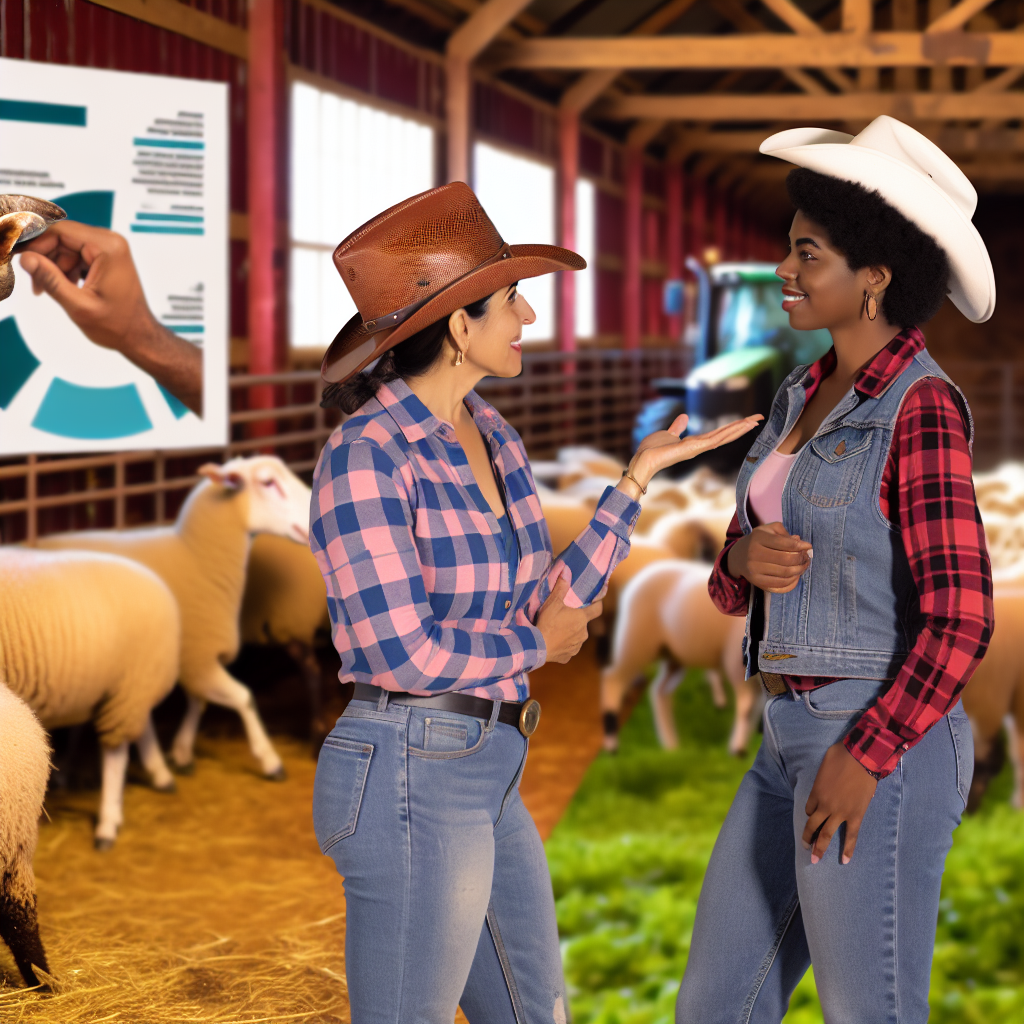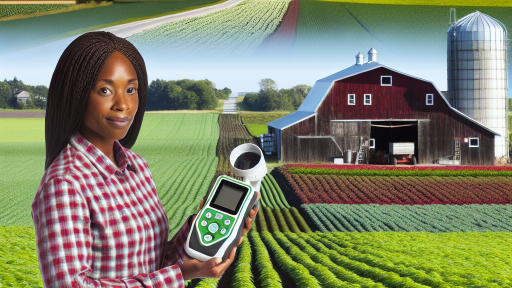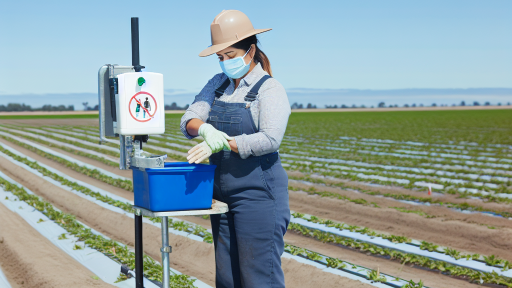Introduction to Animal Welfare Laws
Animal welfare laws protect the rights and well-being of animals in agricultural settings.
These laws dictate how farmers should treat their animals.
Consequently, they have become vital to modern farming practices.
In recent years, consumer awareness has grown regarding animal treatment.
This shift has prompted lawmakers to tighten regulations.
Significance of Animal Welfare Laws
Animal welfare laws promote ethical treatment within the agriculture sector.
They help establish minimum standards for housing, care, and feeding.
Impact on Farming Practices
These laws have changed the way farmers operate their businesses.
Farmers must now invest in proper housing facilities.
This investment leads to healthier animals and better productivity.
Furthermore, ethical treatment can enhance public perception of farming.
Challenges and Considerations
Despite the benefits, farmers face challenges in compliance.
New regulations often require significant financial resources to implement.
Moreover, small farms may struggle to meet these standards.
Consequently, there are ongoing debates about balancing animal welfare and economic viability.
Transform Your Agribusiness
Unlock your farm's potential with expert advice tailored to your needs. Get actionable steps that drive real results.
Get StartedThe Future of Animal Welfare Laws
Looking ahead, animal welfare laws are expected to evolve further.
New research may influence how laws are developed and enforced.
Additionally, public opinion will continue to shape these regulations.
Farmers will need to adapt to these ongoing changes accordingly.
Historical Perspective on Animal Welfare Legislation
Animal welfare legislation has evolved significantly over time.
Initially, animals were seen primarily as tools for labor and production.
During the 19th century, concerns about animal cruelty began to rise.
Philosophers and activists started advocating for animal rights and welfare.
The first animal cruelty laws appeared as early as the 1820s in the UK.
Notably, the Royal Society for the Prevention of Cruelty to Animals was founded in 1824.
This organization laid the groundwork for more comprehensive legal protections.
By the late 19th century, more countries began to adopt similar laws.
In the United States, the Animal Welfare Act was enacted in 1966.
This landmark legislation aimed to ensure humane treatment of animals in various contexts.
Over time, amendments have strengthened protections for farm animals.
Meanwhile, public awareness of animal welfare has increased globally.
Many organizations now advocate for improved farming practices that prioritize welfare.
As a result, legislation has begun to reflect shifting societal values.
Countries have implemented bans on certain inhumane practices, such as battery cages.
These changes highlight a growing recognition of animals as sentient beings.
Furthermore, the EU established the Treaty of Amsterdam in 1997.
This treaty recognized the welfare of animals as a key consideration in all policies.
Today, animal welfare laws continue to adapt to modern farming methods.
Legislation now addresses various issues, including living conditions and treatment.
Showcase Your Farming Business
Publish your professional farming services profile on our blog for a one-time fee of $200 and reach a dedicated audience of farmers and agribusiness owners.
Publish Your ProfileConsequently, many farmers have adopted more humane methods of production.
Improved regulations benefit animals, farmers, and consumers alike.
Farmers receive support for implementing welfare-friendly practices.
Consumers increasingly demand ethically sourced products.
The historical evolution of animal welfare laws reflects changing perceptions.
This ongoing journey highlights the importance of legal protections in modern agriculture.
Key Components of Modern Animal Welfare Laws in Agriculture
Understanding Animal Welfare Standards
Animal welfare standards set the baseline for humane treatment of farm animals.
These standards address space, nutrition, and environmental conditions.
Moreover, they focus on mental well-being and stress reduction.
Farmers must adhere to guidelines ensuring proper living conditions.
This adherence promotes healthier animals and better productivity.
Regulatory Bodies and Enforcement
Various governmental agencies oversee animal welfare laws.
The United States Department of Agriculture plays a significant role.
Other organizations include local and state agencies focused on enforcement.
These bodies conduct inspections to ensure compliance.
Violations of animal welfare laws can lead to penalties and legal action.
Public Awareness and Advocacy
Public awareness campaigns have increased attention on animal welfare.
Advocacy groups promote ethical treatment of animals in agriculture.
They educate farmers about humane practices and legal obligations.
Social media amplifies these messages, reaching a wider audience.
As a result, consumers demand higher welfare standards in livestock production.
Impact on Farming Practices
Animal welfare laws influence farming methods on a large scale.
Farmers adopt practices that align with animal welfare regulations.
These include cage-free systems and outdoor access for livestock.
Such changes can enhance animal health and farmer’s marketability.
Ultimately, compliance can lead to economic benefits for farms.
Sustainable Practices and Animal Welfare
There is a significant overlap between sustainability and animal welfare.
Sustainable practices contribute to better animal health and farm efficiency.
Integrating both concepts leads to responsible farming systems.
Farmers increasingly recognize the importance of these connections.
Consequently, they implement practices that support both animal welfare and sustainability.
Explore Further: Understanding Climate Change Laws for Modern Farmers
Impact of Animal Welfare Laws on Farming Practices and Productivity
Improvement of Animal Conditions
Animal welfare laws set standards for housing and care.
These laws ensure animals have enough space to move.
Farmers must provide proper shelter to protect animals from weather extremes.
Consequently, better living conditions increase animal health.
Healthy animals lead to increased productivity in farming.
Consumer Demand and Market Trends
Consumers increasingly prioritize animal welfare in their purchasing decisions.
As a result, farmers must adapt to meet consumer expectations.
Many consumers are willing to pay more for ethically sourced products.
Showcase Your Farming Business
Publish your professional farming services profile on our blog for a one-time fee of $200 and reach a dedicated audience of farmers and agribusiness owners.
Publish Your ProfileThis trend encourages farmers to invest in compliant practices.
Compliance and Operational Challenges
Compliance with animal welfare laws can be challenging for farmers.
Implementation often requires investment in new facilities or equipment.
Farmers might face higher operational costs during this transition.
However, these costs can be offset by increased product demand.
Long-term Economic Benefits
Investing in animal welfare can enhance long-term profitability.
Farmers may benefit from lower veterinary costs due to healthier animals.
Additionally, improved branding can attract new customers.
In the long run, animal welfare laws can lead to sustainable farming practices.
Case Studies of Successful Implementation
Some farms have successfully integrated animal welfare practices.
For example, Green Valley Farms improved livestock conditions.
Their investment led to higher milk production and better-quality products.
Customers noticed, resulting in increased sales and brand loyalty.
Such examples highlight the potential success of compliance.
Find Out More: How To Apply For Agricultural Conservation Programs
The Balance Between Animal Welfare and Agricultural Economics
Importance of Animal Welfare
Animal welfare is crucial for ethical farming practices.
Farm animals deserve humane treatment and care.
Implementing welfare laws benefits both animals and farmers.
Healthier animals lead to better productivity and quality products.
Additionally, consumer awareness drives demand for humane practices.
Economic Implications of Welfare Laws
Welfare laws can affect farming operations economically.
Compliance may require investment in facilities and training.
Farmers often face increased operational costs.
However, these costs can be offset by enhanced marketability.
Ethically raised products often command higher prices.
Balancing Profitability and Ethics
Farmers strive to balance profitability and animal welfare.
Modern farming practices can integrate both aspects effectively.
Using sustainable methods often reduces long-term costs.
For instance, better animal health decreases veterinary expenses.
Furthermore, brands that prioritize welfare can attract loyal customers.
Case Studies of Successful Integration
Many farms have successfully integrated welfare laws with profitability.
Greenfield Farms illustrates the benefits of humane practices.
They adopted better housing designs for their livestock.
As a result, they experienced lower stress levels in animals.
This reduced mortality rates and improved product quality.
Future Considerations
Ongoing developments in animal welfare laws will continue shaping farming.
Farmers must stay informed about these changes to remain compliant.
Additionally, advancements in technology can aid welfare initiatives.
For example, monitoring systems can track animal health effectively.
These innovations promise to enhance both welfare and efficiencies.
Showcase Your Farming Business
Publish your professional farming services profile on our blog for a one-time fee of $200 and reach a dedicated audience of farmers and agribusiness owners.
Publish Your ProfileSee Related Content: Compliance Strategies for Farm-To-Table Legislation in Modern Farming

Case Studies of Farms Adapting to Animal Welfare Regulations
Innovative Practices in Poultry Farming
Sunny Acres Farm embraced new animal welfare regulations last year.
They transitioned to cage-free systems for their chickens.
This change allowed hens to roam freely and exhibit natural behaviors.
Staff reported increased egg production from happier birds.
Sunny Acres also established a new marketing strategy, highlighting their ethical practices.
Challenges Faced by Dairy Farmers
Green Valley Dairy faced significant hurdles during the adaptation process.
Initially, they struggled to comply with new space requirements for cows.
To address this, they expanded their barn facilities.
Additionally, they invested in outdoor grazing areas for their herd.
Despite the initial costs, the investment improved cow health and milk quality.
Success Stories in Pork Production
Maple Leaf Farms has become a leader in humane pork production.
They eliminated gestation crates several years ago.
This decision positively impacted both the pigs and the company’s reputation.
Moreover, their sales increased significantly after the transition.
Customers responded positively to the commitment to animal welfare.
Lessons from Organic Farming
Harmony Acres established a robust organic farming model.
They focus on pasture-based living conditions for all livestock.
This approach not only meets welfare regulations but enhances product quality.
Consumers appreciate the transparency in their farming practices.
Consequently, Harmony Acres has seen a steady growth in customers.
Farmers Collaborating for Better Welfare Standards
Local farming cooperatives promote shared principles of animal welfare.
These collaborations help small farms implement best practices together.
Participating farms share resources and training for improved practices.
This support network fosters community engagement and consumer trust.
Farmers report better outcomes due to collective effort and shared knowledge.
Learn More: Comprehensive Guide to Rural Development Policies for Farmers
Public Perception and Consumer Demand for Cruelty-Free Products
Consumer awareness of animal welfare has significantly increased in recent years.
As a result, many individuals prefer cruelty-free products.
This shift drives the demand for humane farming practices.
Impact of Social Media on Public Awareness
Social media platforms amplify discussions around animal rights.
Viral campaigns raise public awareness about animal mistreatment.
Consequently, consumers are more informed about their choices.
Rise of the Ethical Consumer
Today’s consumers increasingly identify as ethical consumers.
Many prioritize animal welfare when making purchasing decisions.
This trend influences companies to adopt cruelty-free practices.
Response from the Food Industry
The food industry has responded to consumer demand for cruelty-free options.
Many brands now promote humane farming standards.
For instance, grocery chains like Whole Foods emphasize ethical sourcing.
This approach enhances brand loyalty among consumers.
Showcase Your Farming Business
Publish your professional farming services profile on our blog for a one-time fee of $200 and reach a dedicated audience of farmers and agribusiness owners.
Publish Your ProfileLegislation Supporting Cruelty-Free Practices
Several countries have enacted laws promoting animal welfare in farming.
These laws often reflect public demand for humane practices.
Compliance with such legislation is crucial for business sustainability.
Future Trends in Consumer Behavior
As awareness continues to grow, demand for cruelty-free products will rise.
Educational initiatives can further inform consumers about ethical choices.
Ultimately, a shift towards cruelty-free products may redefine the food industry.
Future Trends in Animal Welfare Laws and Their Implications for the Farming Industry
Adapting to Stricter Regulations
The farming industry must adapt to increasingly stringent animal welfare laws.
These laws aim to protect animal rights and ensure humane treatment.
Farmers will need to update their practices and facilities accordingly.
In many regions, governments are tightening regulations on animal housing.
This change will require investment in better housing and care systems.
Consequently, producers must stay informed about regulatory updates.
Compliance will help avoid legal penalties and maintain consumer trust.
Consumer Demand and Ethical Farming
Consumer preferences are shifting towards ethically sourced products.
Animal welfare is a key concern for many modern consumers.
This trend encourages farmers to adopt higher welfare standards.
Transparency in farming practices will become increasingly important.
Labels indicating animal welfare compliance can boost sales.
Consequently, producers focusing on animal welfare may gain a competitive edge.
Innovations in Farming Technology
Emerging technologies will enhance animal welfare on farms.
Automation can reduce stress during feeding and milking processes.
Additionally, monitoring systems can track animal health and behavior.
Data analytics will enable farmers to make informed decisions.
Innovative practices may optimize care and improve overall conditions.
Integrating these technologies can lead to more productive and humane farming.
Global Perspectives on Animal Welfare Laws
Animal welfare regulations vary widely across different countries.
Globalization requires farmers to be aware of international standards.
Many countries are strengthening their animal welfare laws.
This evolution may lead to harmonized regulations worldwide.
Consequently, farmers may need to adjust practices for export markets.
Cross-border trading will increasingly depend on compliance with safety standards.
Environmental Considerations
Animal welfare and environmental sustainability go hand in hand.
Farmers must consider the ecological impacts of their practices.
Implementing sustainable methods can improve animal living conditions.
This approach may also reduce carbon footprints and resource usage.
Deploying regenerative agriculture can enhance overall farm health.
Consequently, ethical farming practices can benefit both animals and the planet.




